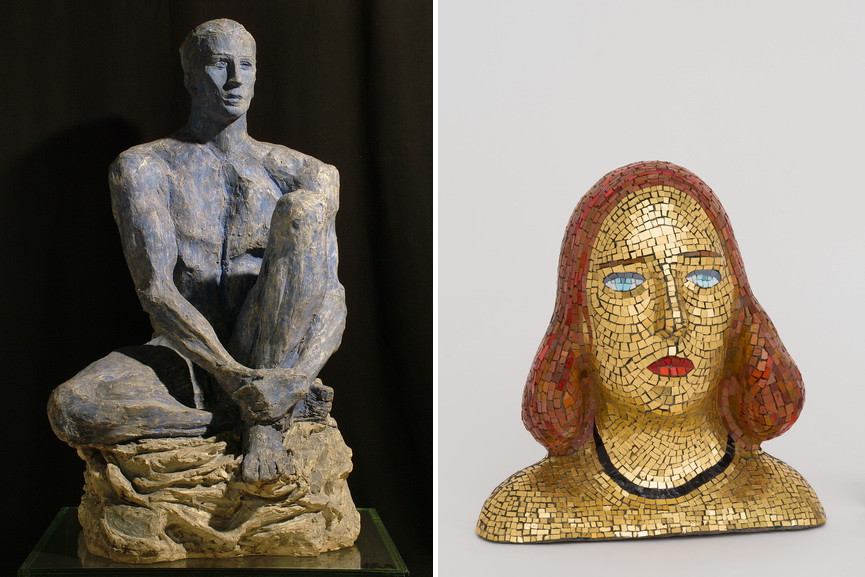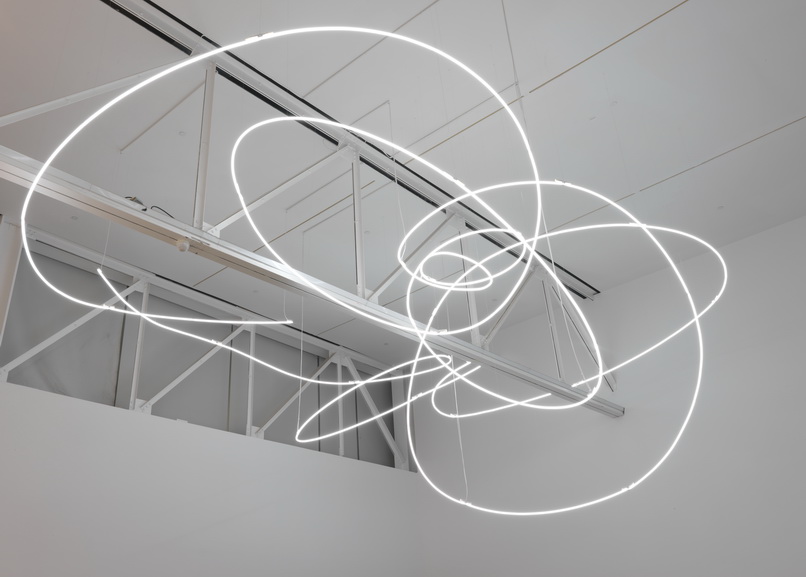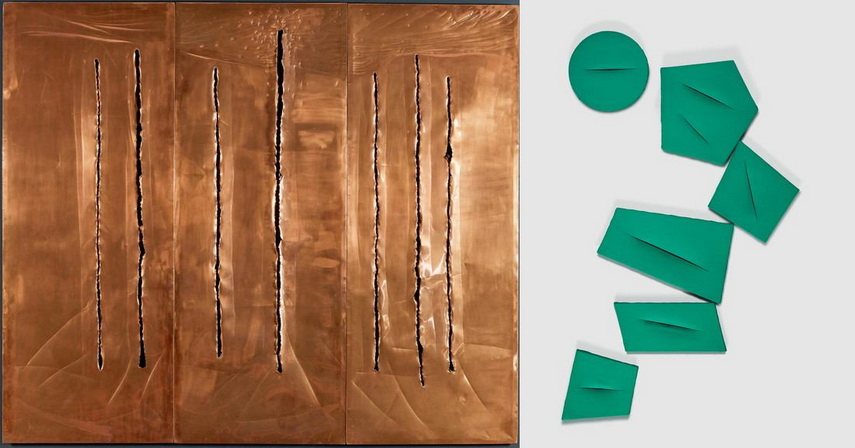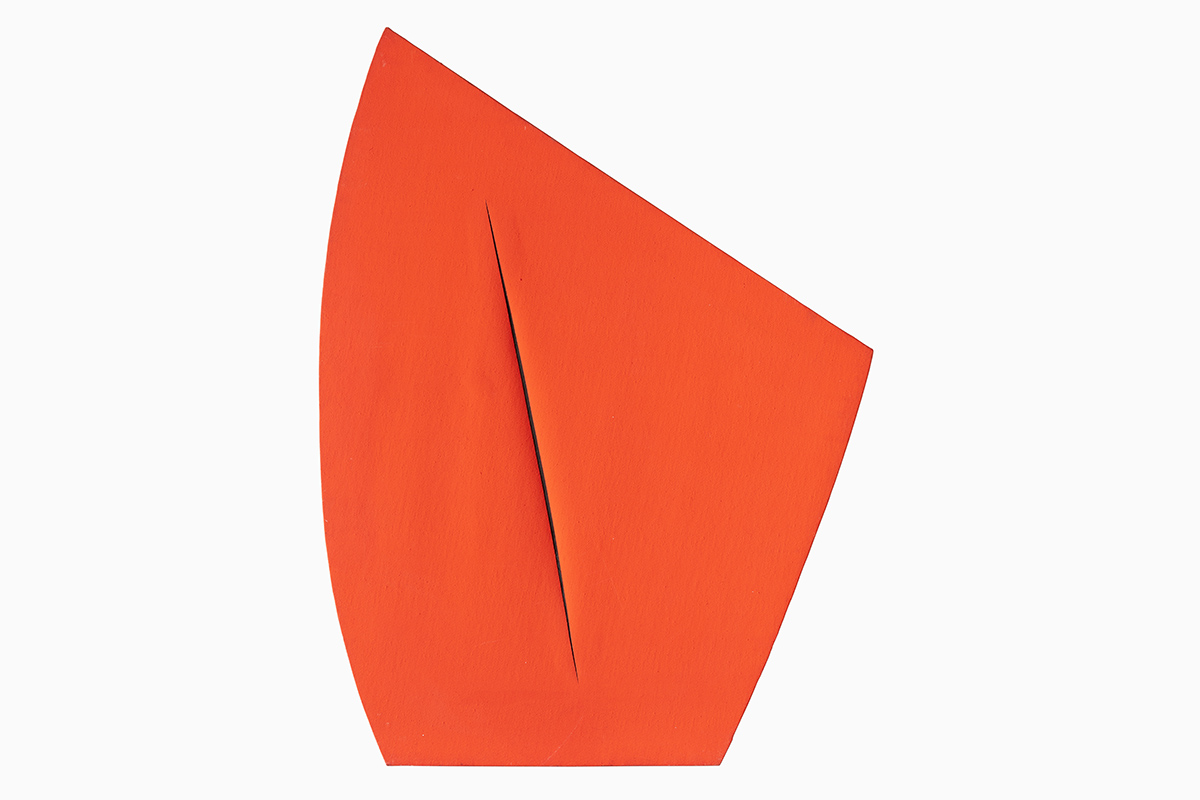[ad_1]
Despite the poverty and the burden of Fascism, The Italian art scene quickly recovered after the Second World War and the younger artists who had sprung during the interwar period stepped out with entirely new and, in some cases, quite radical ideas. Such a pioneer was Lucio Fontana, a leading European figure who had a major influence on an entire generation of the 1960s and 1970s artists (especially within the Arte Povera movement). According to the recent scholarly contributions, this artist can be considered one of the first European practitioners of installation art and basically an early Conceptualist.
Observing urgency of Lucio Fontana careful observation is a new exhibition hosted by Guggenheim Museum Bilbao, in form of a grand retrospective titled Lucio Fontana. On the Threshold. For this particular occasion, almost one hundred works encompassing sculptures, ceramics, works on paper, paintings and environments produced by the artist between 1931 and 1968 are gathered, in order to grasp Fontana’s defining role in the art currents of the Post-war period.

The Retrospective of Lucio Fontana
The upcoming exhibition jointly curated by Iria Candela (Estrellita B. Brodsky Curator of Latin American Art, The Metropolitan Museum of Art) and Manuel Cirauqui (Guggenheim Museum Bilbao curator) aims to underline an impressive artistic transformation that Lucio Fontana underwent – from being a sculptor to creating purified environments and the iconic cuts. It will reveal the origins of forms and gestures which became trademark throughout Fontana’s period of experimentation, indicating the influence of important art movements in Italy and Argentina, such as Futurism, Neoclassicism and the Madí movement.
Namely, the installment will accentuate the impact of Fontana’s radicalism on a global scale especially with his best-known series such as the Cuts and The End of God (La fine di Dio). The artist started producing slashed canvases in 1958, and this performative gesture was aimed to tackle the absoluteness of space, meaning that Fontana used a knife to unravel the two-dimensional plane of a canvas and to imbue it with an almost mystical depth.

From Traditional Sculpture To Avant-garde Interventions On Canvas
Lucio Fontana started his career as a sculptor in Argentina during the 1920s, while working in his father’s business (funerary sculptures for cemeteries). In Milan, he attended the sculpture course at the Academy of Fine Arts in Brera, and he quickly became aware of the academic limits. During the 1930s, the artist started experimenting while remaining loyal to traditional formats of working with sculpture and relief in plaster, terracotta, and ceramic. Fontana was inspired by the Etruscan sarcophagi and Antique sculptures, as well as by the avant-garde movements such as Futurism.
In 1947 he founded Spatialism, an art movement intended to synthesize color, sound, space, movement, and time into a new type of art, and that is how he started producing spatial interventions with electric light and space, including the use of neon tubes. A year later, Fontana made the first immersive installation called Ambiente spaziale a luce nera (‘Spatial environment’) at the Galleria del Naviglio in Milan; it was a giant amoeba-like shape suspended from the ceiling of a darkened room lit by neon light. The reconstruction of these rarely known installations made since the late 1940s until the end of his life will be on display at the upcoming exhibition (Neon Structure for the Ninth Milan Triennial (Struttura al neon per la IX Triennale di Milano, 1951), the Spatial Environment: “Utopias,” at the Thirteenth Milan Triennial (Ambiente spaziale: “Utopie”, nella XIII Triennale di Milano 1964) and Spatial Environment in Red Light (Ambiente spaziale a luce rossa, 1967)).
During the mid-1950s, Fontana embraced light-reflecting materials such as glitter and fragments of glass in his perforated paintings (he used large amounts of glass from Murano sent to his studio in Milan), and the series Stones (Pietre) and Oils (Olii) will reveal to the full extent the treatment of the material.
Fontana was fascinated by the growth of the Italian economy after the War, as well as global technological advancement, the Space Race and the growing nuclear threat of the Cold War. That is how he came to the iconic Cuts; by literally breaking the pictorial surface, Fontana made a radical gesture indicating the new kind of artistic paradigm. As mentioned, the first slashed painting was made in 1958, and the technique was then developed further – the artist would apply the paint monochromes, and slash them with a knife; after the paint dries, Fontana would shape the opening with his hands.
During the early 1960s after his first trip to New York, Fontana was largely inspired by the skyscrapers and their polished surfaces, and so he started using materials such as copper, brass, and aluminum in the Metal Sheets (Metalli); few of these works will be on display as well.

Lucio Fontana at Guggenheim Bilbao
It is clear that Lucio Fontana defined the development of contemporary art of the second half of the twentieth century by articulating and transforming the avant-garde heritage and introducing a new aesthetic of the so-called space age.
An illustrated catalog with archive photographs of his the mentioned environments, public commissions and studio, and essays written by international experts will follow the exhibition.
Lucio Fontana. On the Threshold will be on display at Guggenheim Bilbao from 17 May until 29 September 2019.
Featured images: Lucio Fontana – Spatial Concept, Expectation (Concetto spaziale, Attesa), 1959. Water-based paint on canvas with slash, 118 × 88 cm. Collezione Prada, Milan © Fondazione Lucio Fontana, Bilbao, 2019; Battle (Battaglia), 1947. Glazed ceramic, 18 × 30 × 12 cm. Private collection © Fondazione Lucio Fontana, Bilbao, 2019; Spatial Environment in Red Light (Ambiente spaziale a luce rossa ), 1967. Painted wood, glass tubes, neon, and mixed media, 220 × 600 × 490 cm. Destroyed. Reconstruction authorized by Fondazione Lucio Fontana – project Pirelli HangarBicocca 2017. On show: reconstruction 2019, authorized by Fondazione Lucio Fontana – project Pirelli HangarBicocca 2017. © Fondazione Lucio Fontana, Bilbao, 2019, Courtesy Guggenheim Bilbao.
[ad_2]
Source link

